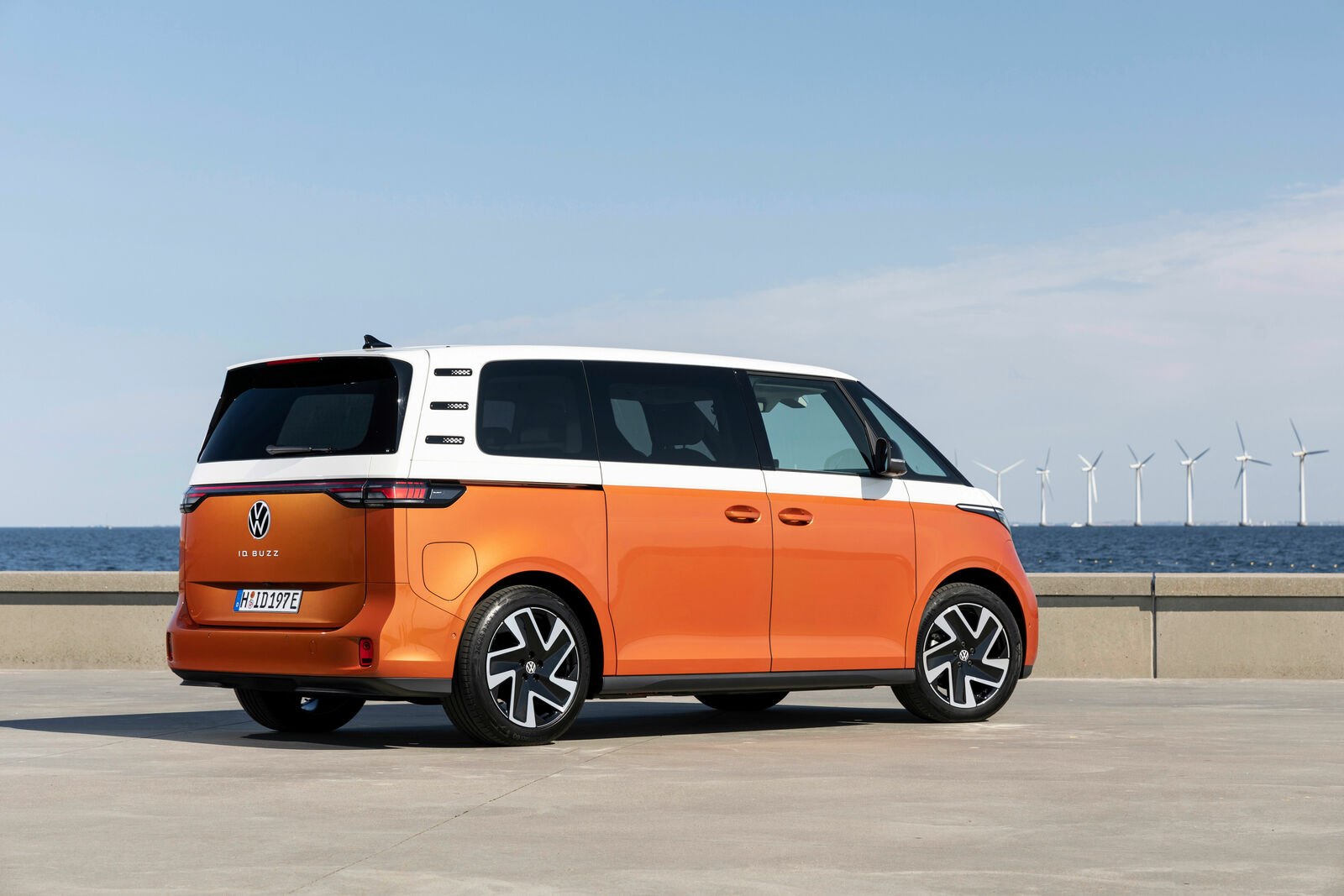Top levels of comfort and safety. The ID. Buzz and ID. Buzz Cargo are equipped with a wide array of electronic driver assist systems, which constantly keep an eye on optimum handling. The basis for high levels of comfort and safety is formed by the analogue fundamental layout of the suspension. Used at the front is a MacPherson axle with spring dampers. The counterpart at the back is a highly modern multi-link suspension system. The latter ensures that the sideways and lengthways forces get ideally separated from each other. Both axles are very compact. The track widths, meanwhile, of 1,673 mm (at the front) and 1,670 mm (at the back) are large. The compact design of the front axle enables a small turning circle of 11.09 metres. At the back, the large track width provides ample room for feeding loads through between the wheel arches. This width is 1,204 mm in the luggage space of the five-seater and 1,230 mm in the cargo space of the van.
First Bulli with 21-inch wheels. Wheels are available for the ID. Buzz Pro in sizes 18-, 19-, 20- and 21-inch. The maximum wheel size for the ID. Buzz Cargo is 20 inches. The wheel rims are fitted with tyres optimised for roll resistance. The front tyres are always narrower than the rear ones, thus adding to the vehicle’s agility. The ID. Buzz is slowed down at the front via disc brakes with a diameter of up to 382 mm (depending on wheel rim size); at the back both versions have wear-resistant drum brakes.
Recuperation rather than conventional braking. Via the recuperation intensity of the electric drive system, it is possible for the ID. Buzz to be slowed down without any intervention of the axle brakes. In the process the kinetic energy gets transformed into electric energy and fed into the battery. In automatic mode ‘D’ (Drive) the ID. Buzz sails along as soon as the driver lifts their foot off the drive pedal – the electric motor runs freely and offers no resistance. In this case the vehicle’s rolling increases the range. In automatic mode ‘B’ (Brake) – which like ‘D’ is also enabled via a small lever on the steering column – the ID. Buzz slows down as soon as the driver eases off the drive pedal. The recuperation effect is now so great that the normal brakes are hardly used any more. This is particularly expedient on downhill stretches, as the wheel brakes are spared the wear and a great deal of energy gets recovered. A key role is played here by the electric brake servo: up to a deceleration requirement of around 0.3 g – that equates to around 100 kW of regenerative braking power – the ID. Buzz brakes solely via the drive system.
